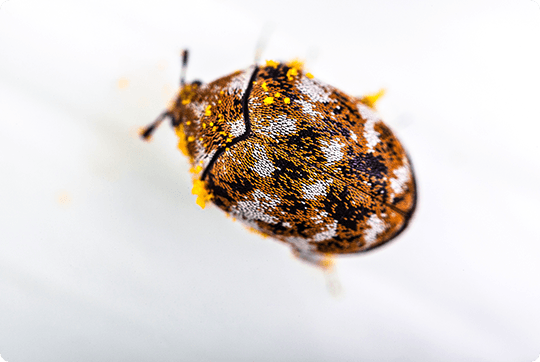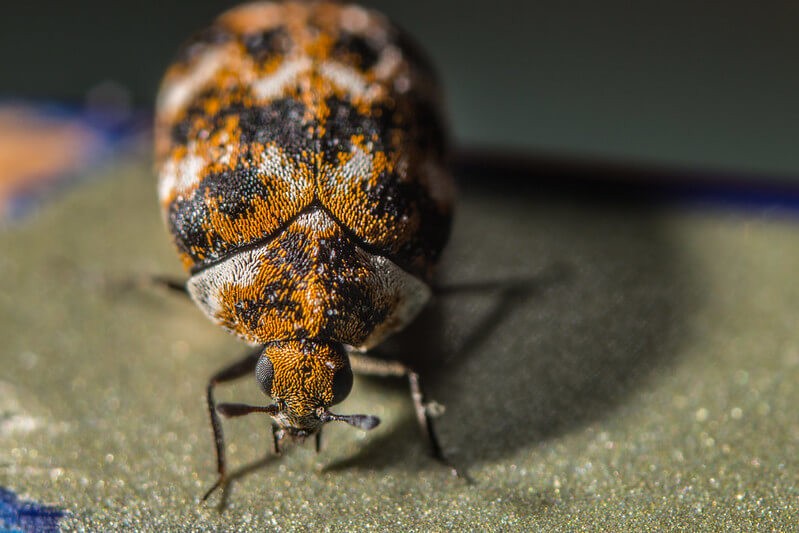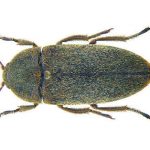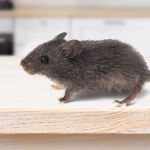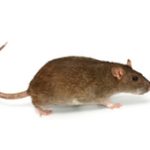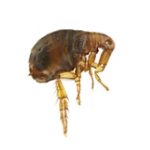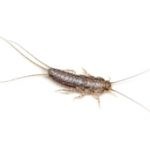How to Get Rid of Carpet Beetles
Carpet beetles may be small, but the damage they leave behind is not. These common household pests can ruin natural fabrics, carpets, furniture, and even stored food if left untreated. Whether you’ve spotted strange holes in your clothing or found tiny beetles near windows and baseboards, acting quickly is essential. In this guide, you’ll learn exactly how to get rid of carpet beetles fast, using proven methods that tackle every stage of their life cycle. Plus, we’ll share expert tips to stop them from coming back, so you can protect your home long-term.
Locate the Source
Before you can get rid of carpet beetles, it’s essential to identify the source of the infestation. These textile pests prefer dark, undisturbed areas near their food source. Common hiding places include under furniture, at the edges of carpets, inside wardrobes, and in dry food storage cabinets. Look for carpet beetle larvae, shed skins, or tiny black beetles, all telltale signs of an active carpet beetle infestation.
Vacuum Thoroughly and Consistently
Once you’ve located the source of the carpet beetle infestation, it’s time to act. Begin by vacuuming thoroughly around the affected area, then move on to the rest of your home. Pay special attention to upholstered furniture, such as sofas and armchairs, especially the seams and undersides where carpet beetle larvae hide.
Use your vacuum’s crevice tools to clean hard-to-reach places. For best results, use a HEPA vacuum for carpet beetles, which traps allergens and microscopic debris. To successfully get rid of carpet beetles, repeat this process daily until there are no signs of activity.
Use Boric Acid for Carpet Beetles
One of the most effective DIY methods to get rid of carpet beetles is using boric acid. This widely available powder is lethal to many household insects, and carpet beetle larvae are no exception. Sprinkle boric acid powder generously over infested carpets, rugs, or fabric-covered areas.
Let it sit for two to three hours, then thoroughly vacuum to remove dead beetles, larvae, and eggs. Be cautious, though, boric acid can be harmful to pets, so keep them away from treated areas during and after application.
Dispose of Infested Clothing
If you’ve found signs of carpet beetle damage on clothing, such as holes in woollens or irregular tears, it’s safest to throw the items away. Infested garments may still harbour carpet beetle eggs or larvae hidden within the fabric, even if they appear clean. Keeping them risks allowing the carpet beetle infestation to continue and spread throughout your home.
Wash and Deep Clean All Fabrics
To effectively get rid of carpet beetles, wash all machine-washable fabrics, including clothing, towels, bedding, cushion covers, and curtains, in hot, soapy water. Use the highest temperature setting and quality laundry detergent to ensure carpet beetle eggs and larvae are destroyed.
For carpets and rugs, consider shampooing with hot water or using a steam cleaner, which is especially effective at killing hidden carpet beetle larvae in fibres.
Remove Infested Dry Food
Dispose of any dry food items that show signs of carpet beetle activity or are likely to be targets, this includes cereal, oats, rice, and dry pet food. Carpet beetles are known to infest pantry staples, so when in doubt, it’s safer to discard and replace them with fresh, securely sealed alternatives.
Set Carpet Beetle Traps
After cleaning, place insect traps in both infested and nearby suspected areas to monitor for lingering activity. Pheromone glue traps are especially effective, they help attract and capture adult carpet beetles, allowing you to confirm whether the infestation has been successfully removed. Monitoring with traps is a great way to ensure your efforts are working.
Switch to Synthetic Fabrics
For long-term prevention, consider replacing natural fibre textiles, such as wool, fur, or leather, with synthetic sheets and fabrics. Natural materials contain keratin, a protein that attracts carpet beetles and other fabric-eating insects.
By removing their food source, you make your home far less appealing to these pests. This proactive step can help stop a carpet beetle infestation from recurring.
Do you have pest infestation in your property?
Get the help of a specialist in the battle against the pests!
How to Prevent Carpet Beetles From Returning
Once you’ve successfully gotten rid of a carpet beetle infestation, the last thing you want is a repeat invasion. Taking a few preventive steps can help deter these textile pests from returning. Follow the tips below to keep your home free from carpet beetles and protect your fabrics and belongings long-term.
Clean Regularly to Remove Attractants
Maintaining a clean home is key to preventing a carpet beetle infestation. Regularly vacuum carpets, upholstery, and hard-to-reach corners to eliminate hair, dust, lint, and other organic debris that serve as food sources for carpet beetle larvae. A clean, well-kept environment gives these textile pests fewer places to hide and breed.
Store Dry Food in Air-Tight Containers
To avoid attracting carpet beetles, keep all dry food, including cereal, oats, grains, and dry pet food, in sealed, air-tight containers. This not only protects your pantry from infestation but also prevents beetles from laying eggs near food sources. Securing food properly is a simple but effective step in long-term carpet beetle prevention.
Protect Clothing with Plastic Covers or Cedar
Keep carpet beetles out of your wardrobe by storing unused clothing in plastic garment bags or containers. These pests cannot chew through plastic, making it an effective barrier against fabric-eating insects.
For added protection, place cedarwood blocks or sachets in your closets and drawers, carpet beetles detest the smell of cedar, making it a natural repellent that helps keep your natural fibre clothing safe from damage.
Let Light Into Dark Storage Areas
Carpet beetles thrive in dark, undisturbed places, so opening your wardrobes and closets for a few hours each day can help deter them. Natural light disrupts their preferred environment and reduces the chance of them nesting in your clothing and fabric storage. Simple habits like this can play a big role in preventing carpet beetle infestations.
Remove Bird and Animal Nests Around Your Property
Carpet beetles often originate from bird and rodent nests, which provide an ideal environment for their eggs and larvae. Regularly check and remove nests in attics, roof spaces, chimneys, or near vents. This not only reduces the risk of a carpet beetle infestation but also helps prevent problems with other pests like mites and ticks.
Install Window Screens or Keep Windows Closed
To prevent carpet beetles from entering your home, keep windows and doors closed, especially during spring and summer when adult beetles are most active. If ventilation is needed, consider installing fine mesh window screens to block these tiny flying pests. This simple step greatly reduces the risk of a new carpet beetle infestation starting from outdoors.
Inspect Plants and Flowers Before Bringing Them Indoors
Carpet beetles can hitch a ride into your home by hiding on houseplants or freshly cut flowers. Always inspect plants carefully for signs of beetle activity, especially around the leaves and stems, before bringing them inside. This simple precaution can stop an unexpected carpet beetle infestation before it even begins.
Need carpet beetle treatment?
Get in touch with local experts and qualified service provider will help you.
When to Call a Professional
If your carpet beetle infestation is severe or keeps returning despite your best efforts, it’s time to call in professional pest control. Experts can apply long-lasting insecticides, treat hidden areas, and provide follow-up treatments to ensure complete eradication of carpet beetles, eggs, and larvae.
Need carpet beetle treatment? Contact a local pest control specialist to eliminate the problem and safeguard your home long-term.
Still cannot handle the carpet beetle infestation?
Note that we only aim to provide some useful information about how to get rid of carpet beetles infestation. We cannot guarantee that our suggestions will work for you.



